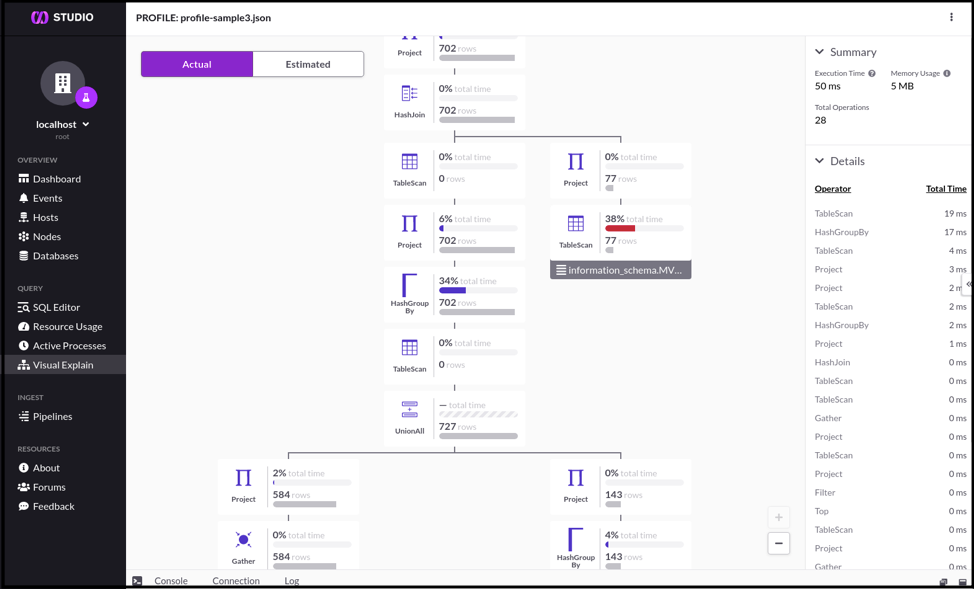
SingleStore’s breakthrough new Universal Storage™ data management, enhanced system of record capabilities, time series enhancements, and more, are now available instantly and on demand with Singlestore Helios. You can try SingleStoreDB Self-Managed 7.0 and Singlestore Helios for free, instantly.
SingleStore is proud to announce the general availability of SingleStoreDB Self-Managed 7.0, available first on Singlestore Helios, the company’s elastic cloud database available on public cloud providers around the globe. Fully managed and available on demand, Singlestore Helios delivers instant, effortless access to the world’s fastest, most scalable data platform for operational analytics, machine learning and AI. SingleStoreDB Self-Managed 7.0 delivers new, fast resilience features; the first iteration of SingleStore Universal Storage, delivering table type convergence; new time series features; and other new features, described below.
With the public availability of SingleStoreDB Self-Managed 7.0 — available now on Singlestore Helios and for download on December 10th— SingleStore further cements itself as a powerful fit for a company’s innovative and most critical operational workloads. Singlestore Helios delivers enhanced ease of use and reduced management complexity, lower total cost of ownership (TCO) compared to both on-premises and cloud provider offerings, and the flexibility to run your data workloads in multiple cloud providers and hybrid deployments.
Also see the AWS-SingleStore press release for Singlestore Helios and the SingleStoreDB Self-Managed 7.0 press release.
What’s New in SingleStoreDB Self-Managed 7.0
We previously described two key sets of features in SingleStoreDB Self-Managed 7.0:
- Resilience features. Resilience features allow database content to survive server and software failures. Resilience features in SingleStoreDB Self-Managed 7.0 include much faster synchronous replication and synchronous durability, and incremental backup, which captures only recently changed data.
- SingleStore Universal Storage features. SingleStore Universal Storage will eventually see data stored in a single table type whose size is not limited by the available memory, yet still provides the highest level of performance for both transactional and analytical operations. SingleStoreDB Self-Managed 7.0 features include rowstore table data compression and fast seeks in columnstore tables.

SingleStoreDB Self-Managed 7.0 also includes a wide range of additional features. Highlights include:
- Improvements in SingleStore Studio. SingleStore Studio features available now include logical monitoring of nodes; physical monitoring of cluster resource usage; the ability to find, understand, and kill long-running queries; and the ability to separate out SQL Editor results into tabs, then export them into a CSV file for analysis.
- Improvements in SingleStore Tools. SingleStore tools enable installation and control of self-managed SingleStore clusters, on-premises and in the cloud. SingleStore Tools include an improved cluster setup utility and easier migration from the original SingleStore Ops to the new tools. Tools also perform upgrades from SingleStoreDB Self-Managed 6.7 and SingleStoreDB Self-Managed 6.8 to SingleStoreDB Self-Managed 7.0.
- Automatic gathering of SingleStore statistics. All types of statistics, including range and cardinality, are now automatically gathered, on all types of tables. This is a big ease-of-use improvement and dovetails with the benefits of Singlestore Helios and the move to SingleStore Universal Storage.
- Time Series functions. SingleStoreDB Self-Managed 7.0 includes the new FIRST, LAST, and TIME_BUCKET functions, and the ability to designate a SERIES TIMESTAMP column in metadata, greatly simplifying code for time series processing with SingleStore.
- Additional improvements. These include improvements to query execution, query optimization, data storage, data loading, and data backup, as well as cross-database views.
Singlestore Helios and SingleStoreDB Self-Managed 7.0 continue to include robust free options. Singlestore Helios has a free 8-hour trial; SingleStoreDB Self-Managed can be used indefinitely for free, within limits on the number of nodes used, and with community support only.

Benefits of Singlestore Helios
With the initial release of SingleStoreDB Self-Managed 7.0 occurring through Singlestore Helios, on AWS and other cloud platforms, the combined advantages of Singlestore Helios and SingleStoreDB Self-Managed 7.0 become available on AWS.
Singlestore Helios advantages include:
- Effortless deployment and elastic scale. With Singlestore Helios, you get the full capabilities of one-click deployment and easy cloud scalability. Users skip all the initial stages that are usually required for database availability: hardware procurement; racking servers; operating system and libraries installation and testing; database software deployment and configuration; and management of VMs or containers and their uptime. With Singlestore Helios, customers simply choose the number of nodes they wish. Singlestore Helios starts them up and keeps them running. It handles data backup and restore, and managing and maintaining the software, using the cloud-native SingleStore Kubernetes Operator and the SingleStore Kubernetes stack.
- Enhanced ease of use and reduced TCO. Automatic setup and automated resizing of SingleStore clusters greatly increases ease of use for customers. (Resizing is handled on request, and will be further automated in future versions of Singlestore Helios.) In Singlestore Helios, SingleStore handles much of the work, and many of the issues, that were formerly left to customer DevOps staff – either alone, or in cooperation with SingleStore Support. Staff are freed up as Singlestore Helios helps eliminate tedious, time-consuming tasks. As a cloud resource, Singlestore Helios ensures that the organization pays only for what it needs. (These aspects of Singlestore Helios are greatly enhanced by the new features in SingleStoreDB Self-Managed 7.0, below.)
- Greatly increased flexibility. SingleStore combines the capabilities of OLTP databases and online analytical processing (OLAP) databases into a single database. The same database manages streaming data on ingest and processing, and replaces complex extract, transform, and load (ETL) processes with SingleStore Pipelines. It also supports both high concurrency of query volume and high query complexity. This eliminates data sprawl – the need for multiple copies of the same data – and reduced the number of data tools you need to support a given application. You get less complexity and up-to-date data for your applications.
A converged database, managed by SingleStore as the provider, with SQL support and full scalability – that is, Singlestore Helios, powered by SingleStoreDB Self-Managed 7.0 – offers a breakthrough capability to power rapid growth for organizations large and small.
Next Steps
Singlestore Helios, powered by SingleStoreDB Self-Managed 7.0, is available now. You can get started instantly with SingleStore today for free or contact Sales.





